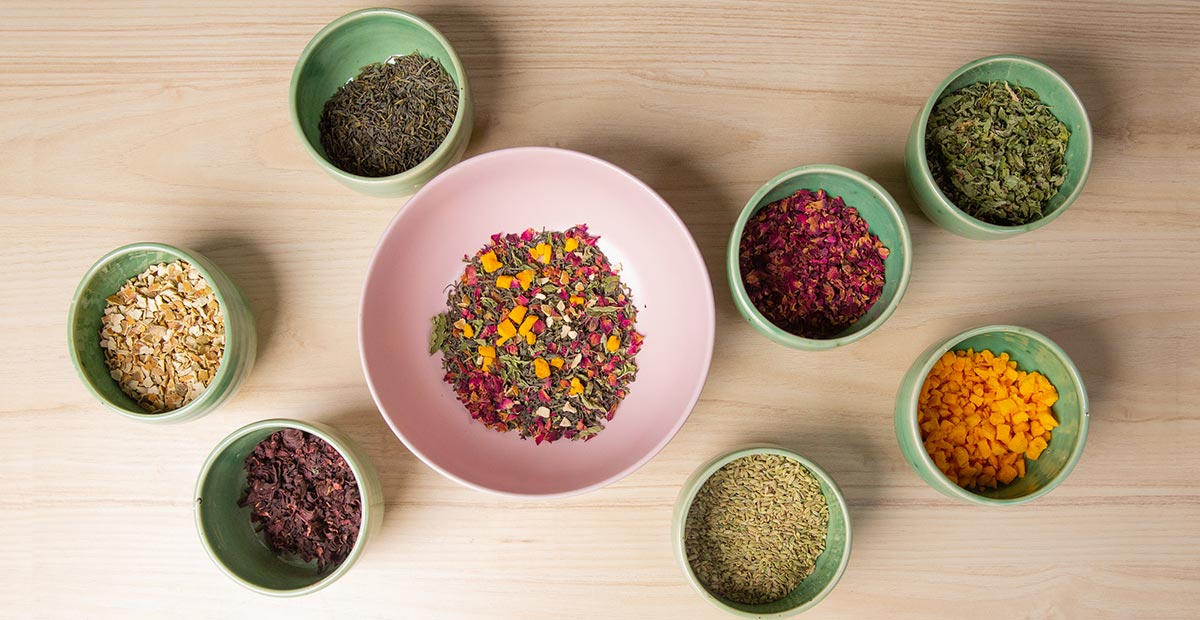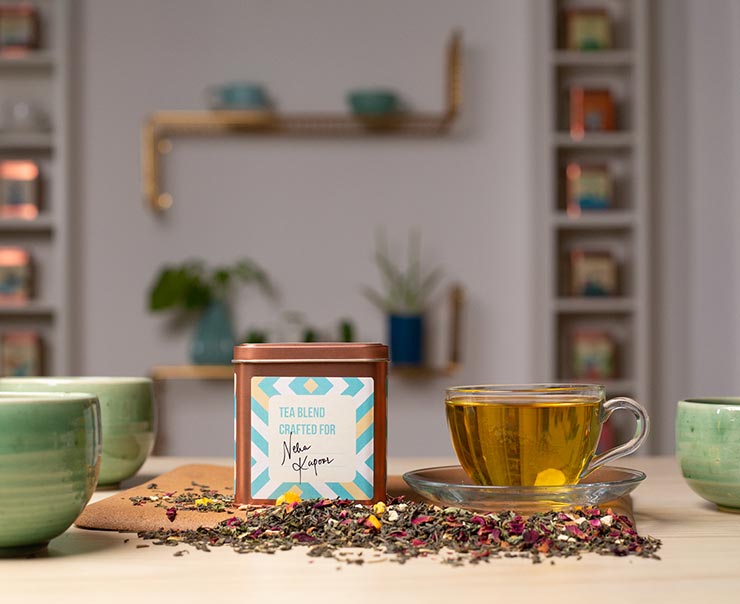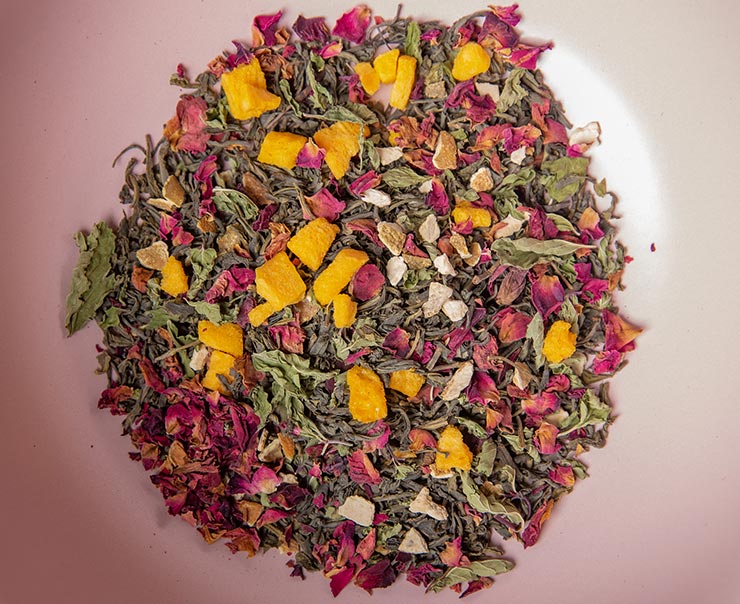
The practice of carefully blending purposeful amounts of tea leaves, herbs and spices is truly an art. It’s a myth that you can take the finest ingredients, mix them all together and you have the best tea blend that money can buy. Tea Blending is a refined art and the mark of any good tea blend lies in the balance. Tea blending is imaginative and yet calculative at the same time. It engages all of the senses simultaneously. An important tip is to first drink with your eyes and nose and then with your palate.
Have you ever tasted natural vanilla bean? Or bitten into a lemon peel? Do you know the taste of long pepper? In tea blending, understanding the flavour family is extremely important. My first advice to all tea enthusiasts is to work on building their flavour vocabulary. Start a taste diary by keeping notes of what words you would use to describe the teas which you are tasting. Over time this will train your palate and give you the right words to express your taste notes.
Tea blends are a melange of base teas and botanicals, which include spices, fruits, flowers and herbs.

Base teas refer to the origin of the tea, the region it comes from and the nuances it brings along with it. For example, Assam Black Tea, Darjeeling Green Tea.
Spices like Cinnamon, Star anise, Cloves etc. are the easiest to work with because they release their natural oils when steeped in hot water and add a rich flavour to the tea.
Fruits can be deceptive. You might think of berries as sweet, but when you actually taste a dried berry without any added sugar, it is tart in flavour. For beginners, fruits like Orange, Pineapple, Apple are easy to experiment with.
Flowers should be blended with extreme care. The delicate flavour can be easily lost if paired with strong flavours. Jasmine, Lavender, Chamomile fall into these categories.
Herbs like Mint, Lemongrass and Sage add a punchy flavour to the tea. Most often they uplift the entire blend with their refreshing notes and especially their aroma.
Here are two recipes that are good for tea enthusiasts to try at home. Each recipe makes 100 gms which will give you about 40-50 cups of tea (depending on how strong you like your tea). Please ensure that each blend is stored in an airtight container, away from direct sunlight and moisture, for at least 5 days before you can start brewing this tea. After this time, the flavours infuse and your tea blend is ready for sipping. Enjoy!
How to blend Rose Petals, Cardamom, Orange Peel in Black tea
60 gms Assam Orthodox Black Tea or any other full leaf tea.
20 gms dried Rose Petals
10 gms crushed cardamom pods
10 gms bits of dried orange peel
Store in an airtight container, away from direct sunlight and moisture, for 4-5 days.To brew, use hot water (100 degrees) and steep for 3-4 mins
In this blend, rose is the most delicate ingredient. I will be careful to use a mildly flavoured cardamom so that spice does not overpower the flower. Hence, we will be crushing the cardamom pods and not using them as a whole. Orange peel will add citrus burst and freshness to the blend, but too much will make the blend bitter. This example gives you a window in to the mind of a tea blender. It’s all about striking the right balance to let each ingredient shine. Sometimes you have to choose ingredients that are not the most potent in flavour, or else it will disturb the balance in the tea blend.

How to blend Marigold, Lemongrass and Ginger Green Tea:
50 gms Japanese Sencha or Darjeeling Green Tea or any other full leaf Green Tea
30 gms dried Marigold petals (yellow or orange)
10 gms dried lemongrass
10gms dried ginger bits
Store in an airtight container, away from direct sunlight and moisture, for 4-5 days.
To brew, use water which is at less than boiling point (roughly 80 degrees) and steep for 2-3 minutes.
Author: Snigdha Manchanda is India's First Certified Tea Sommelier, pursuing her passion for tea over the last decade. She has tasted and profiled over 2000 varieties of teas. She is the Founder & CEO of India’s most loved tea company, TeaTrunk.com. If you’ve tried and enjoyed the recipes, do tag your photos to @teatrunk on Instagram, Facebook and Twitter.